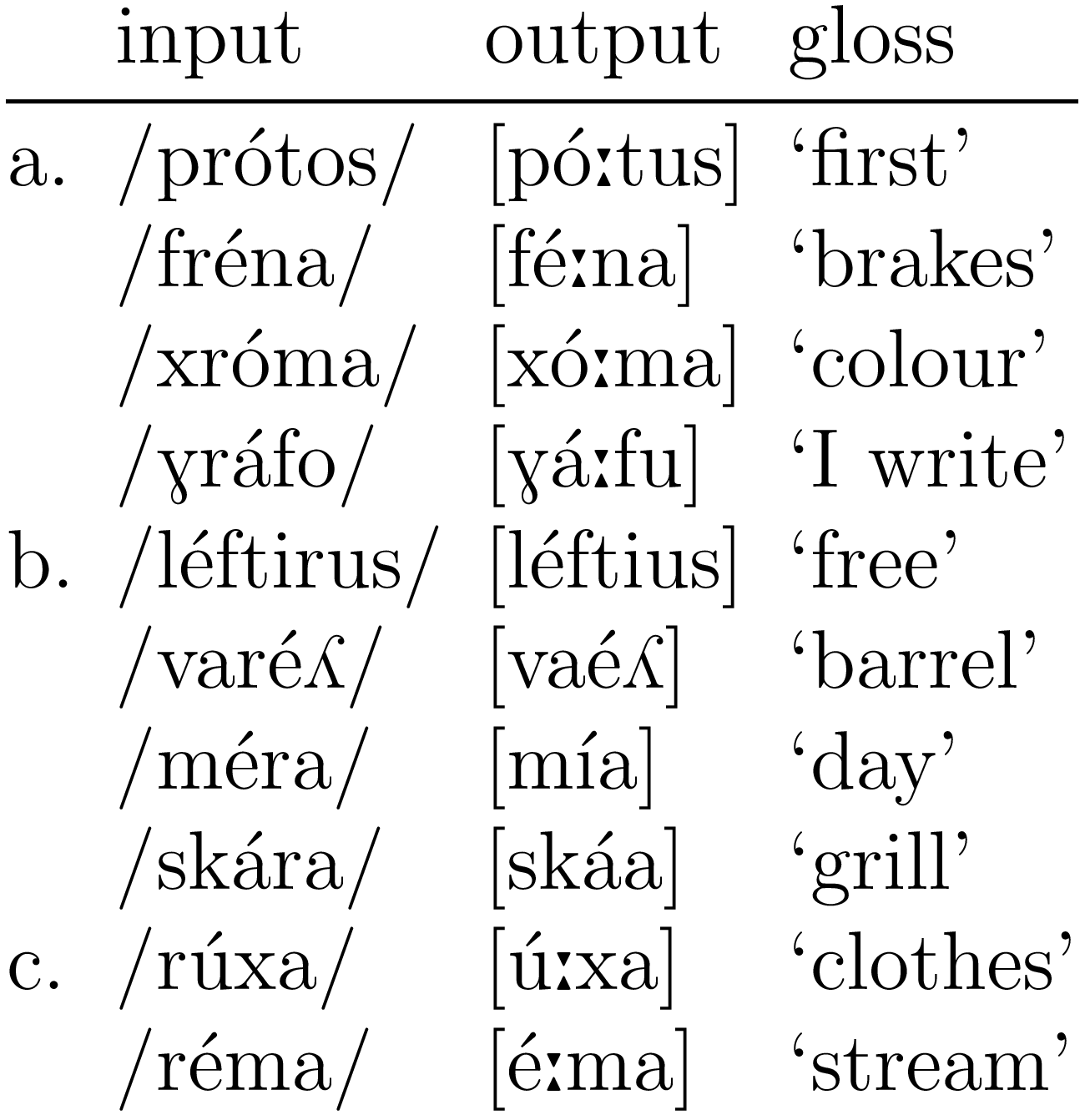OE [nixt] > ME [ni:t] (> ModE [najt] night); this is “easy” because the skeletal slot is vacated right next to the lengthened segment.
H [hida] > [hiːd] ‘bridge’, Old Church Slavonic [bógŭ] > pre-Serbo-Croation [bôːg] (=[bóog]) ‘god’, OCS [bobŭ́] (you should see an acute on a breve on the u) > pSC [bóːb] (=[boób]) ‘bean’, proto-Greek [odwos] > Ionic Greek [oːdos]; these are difficult because we have to get the vacated skeletal slot across a consonant.
Assign a mora (the unit of syllable weight) to all vowels and in some languages to some (notably preconsonantal) consonants. But just so, this solution turns out to be too loose: the mora can reassociate to practically any segment.
To control the possibilities Hayes proposes to abandon the skeleton and replace it with moras. A drawback: if moraless (typically onset) consonants are directly linked to the skeleton, their order will remain undecided in complex onsets.

